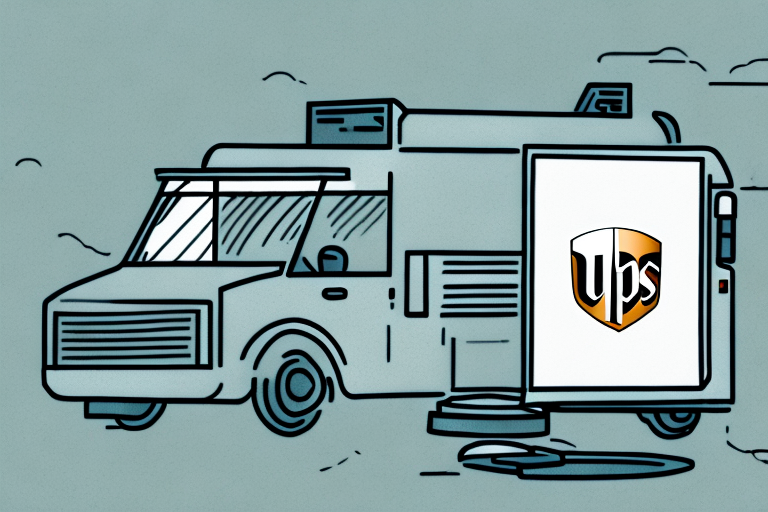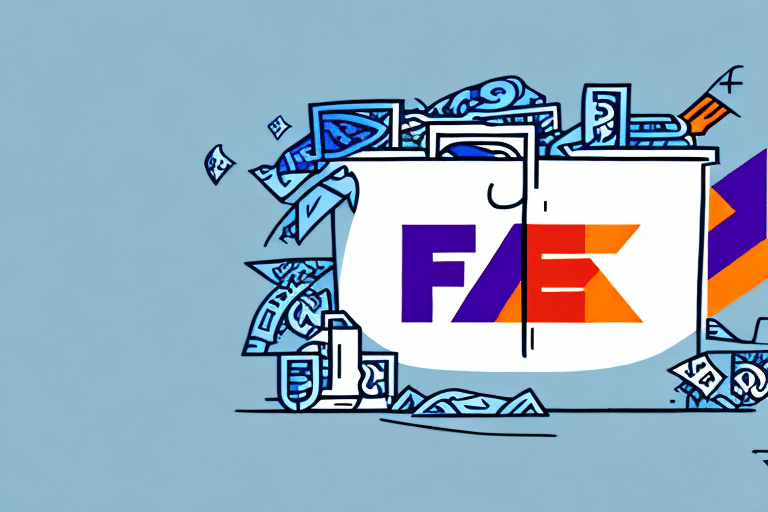Understanding the UPS Chargeback Ground Hundredweight Fee
If your business ships large, heavy items, understanding the UPS Chargeback Ground Hundredweight Fee is essential. This fee is imposed by UPS on businesses that do not meet the minimum requirements for ground transportation. In this article, we will explore what the fee entails, why businesses are charged, how it is calculated, and offer strategies to reduce or dispute the fee. Additionally, we will cover recent policy changes, alternative shipping options, case studies, and best practices for managing shipping costs effectively.
What is a UPS Chargeback Ground Hundredweight Fee?
A UPS Chargeback Ground Hundredweight Fee is applied by UPS to businesses whose packages exceed 150 pounds and fail to meet the minimum density requirement of 600 pounds per cubic foot. This fee is calculated based on the package's weight and the distance it travels, effectively aimed at covering the additional costs associated with transporting heavier and bulkier items.
Understanding and managing the Hundredweight Fee is crucial for businesses to control shipping expenses. Strategies to avoid this fee include consolidating smaller packages into single larger shipments, optimizing packaging to meet density requirements, and considering alternative shipping methods such as air freight when appropriate.
Why Do Businesses Get Charged This Fee?
The UPS Chargeback Ground Hundredweight Fee is enforced to offset the higher costs associated with handling and transporting larger, heavier packages. Additionally, it incentivizes businesses to optimize their packaging and shipping processes to minimize package size and weight, thereby improving overall shipping efficiency.
Businesses that fail to consolidate shipments or optimize packaging may experience a significant increase in shipping costs due to the accumulation of these fees. According to UPS's latest shipping data, businesses with high shipment volumes can reduce these costs by implementing efficient packaging strategies (UPS Shipping Services).
How is the Fee Calculated and What Factors Affect It?
The UPS Chargeback Ground Hundredweight Fee is determined by two primary factors: the weight of the package and the distance it travels. Additional factors influencing the fee include the package's density, the delivery area, and the type of package being shipped.
Key Factors Affecting the Fee:
- Package Weight: Packages exceeding 150 pounds incur the Hundredweight Fee.
- Distance Traveled: Longer shipping distances result in higher fees.
- Package Density: Lower density packages (below 600 pounds per cubic foot) attract higher fees.
- Delivery Area: Deliveries to remote or rural areas may face additional charges.
- Package Type: Oversized or hazardous materials may incur extra fees.
Accurate declaration of package contents and dimensions is essential to ensure correct fee assessment and avoid unexpected charges.
Tips for Reducing Your UPS Chargeback Ground Hundredweight Fee
To minimize the UPS Chargeback Ground Hundredweight Fee, businesses should:
- Optimize Packaging: Use lighter, smaller packaging materials to reduce both weight and volume.
- Consolidate Shipments: Combine multiple smaller packages into a single shipment to increase density.
- Negotiate Rates: Engage with UPS to negotiate better shipping rates based on volume.
- Use Alternative Shipping Methods: Consider air freight or less-than-truckload (LTL) shipping for cost efficiency.
- Accurate Labeling: Ensure packages are properly labeled and addressed to avoid delays and additional fees.
- Regular Invoice Review: Audit shipping invoices regularly to identify and correct discrepancies.
Implementing these strategies can lead to significant savings and more efficient shipping operations.
Common Mistakes That Lead to Higher Fees and How to Avoid Them
Several common mistakes can result in elevated UPS Chargeback Ground Hundredweight Fees:
- Using Oversized Packaging: Employing packaging that exceeds necessary dimensions increases weight and volume.
- Poor Package Density: Failing to meet the minimum density requirement leads to higher fees.
- Shipping to Remote Areas: Delivering to less accessible locations often incurs additional charges.
- Incorrect Labeling: Mislabeling can cause delays or returns, resulting in extra fees.
- Undeclared Package Value: Not accurately declaring the package value can limit reimbursement and cause fee issues.
To avoid these pitfalls, businesses should focus on proper packaging techniques, accurate labeling, and strategic shipping planning.
How to Dispute a UPS Chargeback Ground Hundredweight Fee
If you believe you have been incorrectly charged a UPS Chargeback Ground Hundredweight Fee, you can dispute the charge by taking the following steps:
- Contact UPS Customer Service: Reach out to UPS with your shipping details and reason for disputing the fee.
- Provide Evidence: Submit documentation proving that your package meets the minimum density requirements and that you have optimized your packaging.
- Review Policies: Familiarize yourself with UPS's chargeback policies to strengthen your case.
- Follow Up: Maintain communication with UPS to track the status of your dispute.
Using UPS's Packaging Advisor Tool and enrolling in UPS's Sustainable Packaging Program can also support your efforts to optimize packaging and potentially reduce fees.
Recent Changes to the UPS Chargeback Ground Hundredweight Fee Policy
Recent updates to the UPS Chargeback Ground Hundredweight Fee policy include modifications to the calculation formula and the introduction of a minimum charge per package. These changes may result in higher fees for some businesses, making it crucial to stay informed about policy alterations and adjust shipping practices accordingly.
Key Policy Changes:
- Minimum Charge Per Package: Even packages below the 150-pound threshold are now subject to a nominal charge, ensuring UPS can cover handling costs.
- Tiered Pricing Structure: Shipping volume now influences fee rates, with higher volume businesses eligible for lower fees.
Businesses should review their shipping volumes and practices to leverage potential cost savings under the new tiered structure.
Alternatives to Using UPS for Shipping Larger, Heavier Items
For businesses that frequently ship large, heavy items, considering alternative shipping options to UPS can lead to cost savings and improved efficiency. Alternatives include using freight carriers, less-than-truckload (LTL) shipping, or specialized carriers focusing on heavy or oversized shipments.
Freight Carriers: These carriers specialize in transporting goods that are too large or heavy for traditional parcel carriers. They offer services such as full truckload, LTL, and expedited shipping, along with additional options like liftgate and white-glove delivery.
LTL Shipping: LTL carriers consolidate shipments from different businesses into one truckload, reducing shipping costs per package. While LTL shipping may have longer transit times compared to parcel shipping, it is a cost-effective solution for heavier shipments.
Researching and comparing shipping options can help businesses identify the most suitable and economical methods for their specific needs.
Case Studies of Businesses That Have Successfully Lowered Their UPS Chargeback Ground Hundredweight Fees
Several businesses have effectively reduced their UPS Chargeback Ground Hundredweight Fees through strategic packaging and shipping practices. These case studies demonstrate the benefits of optimizing package density, consolidating shipments, and negotiating favorable rates with UPS.
Case Study 1: Clothing Retailer
A clothing retailer implemented a new packaging system using smaller, more compact boxes and reducing void fill materials. This optimization allowed more items to fit in each package, increasing package density and significantly lowering UPS fees.
Case Study 2: Manufacturer
A manufacturer negotiated better shipping rates with UPS by leveraging their high shipping volume and committing to sustainable shipping practices. By collaborating closely with their UPS representative and adopting eco-friendly packaging materials, they secured reduced rates and overall shipping cost savings.
The Impact of the Fee on Small Businesses and E-commerce Retailers
The UPS Chargeback Ground Hundredweight Fee can substantially impact small businesses and e-commerce retailers that handle larger, heavier shipments. The added costs can erode profit margins and reduce competitiveness in the market. Therefore, it is critical for these businesses to adopt efficient packaging and shipping strategies to mitigate the impact of these fees and maintain profitability.
Best Practices for Managing Shipping Costs and Avoiding Unexpected Fees
Implementing best practices for managing shipping costs can help businesses avoid unexpected fees and maintain control over their expenses. Key practices include:
- Optimizing Packaging: Use materials that minimize weight and volume while protecting the contents.
- Negotiating with Carriers: Secure competitive rates by negotiating based on shipping volume and loyalty.
- Regular Expense Monitoring: Track and analyze shipping expenses to identify trends and areas for improvement.
- Staying Informed: Keep up-to-date with carrier policies and industry trends to anticipate changes that may affect shipping costs.
How to Negotiate Better Shipping Rates with UPS and Other Carriers
Negotiating better shipping rates with carriers such as UPS involves several strategic steps:
- Research and Compare: Analyze different carriers and their rate structures to understand your options.
- Leverage Volume Discounts: Highlight your shipping volume to negotiate discounts based on higher usage.
- Demonstrate Efficiency: Show how your packaging and shipping practices optimize carrier operations, making you a valuable partner.
- Build Relationships: Develop strong relationships with carrier representatives to facilitate better negotiations.
- Propose Long-Term Agreements: Offer to commit to long-term shipping agreements in exchange for lower rates.
Effectively negotiating shipping rates can lead to substantial cost savings and more favorable terms for your business.
Future Trends in Shipping and How They Might Affect UPS Chargeback Ground Hundredweight Fees
Emerging trends in the shipping industry, such as the growth of e-commerce and increasing emphasis on sustainability, are likely to influence UPS Chargeback Ground Hundredweight Fees. Businesses should anticipate and adapt to these trends to remain competitive and manage shipping costs effectively.
Key Trends:
- Increased E-commerce Demand: The surge in online shopping drives higher shipping volumes, potentially impacting fee structures.
- Environmental Considerations: Growing focus on sustainable shipping practices may lead carriers to adjust fee models to encourage eco-friendly packaging.
- Technology Integration: Advances in shipping technology, such as automation and data analytics, can enhance shipping efficiency and reduce costs.
Staying informed about these trends allows businesses to proactively adjust their shipping strategies and mitigate potential fee increases.
Resources for Tracking, Analyzing, and Optimizing Your Shipping Expenses
Various resources are available to help businesses track, analyze, and optimize their shipping expenses. Utilizing these tools can lead to more efficient shipping operations and cost savings.
Key Resources:
- Shipping Software Solutions: Platforms like ShipStation, Shippo, and EasyShip offer comprehensive shipping management features.
- Carrier Portals: UPS's own portal provides tools for tracking shipments, managing invoices, and analyzing shipping data.
- Consulting Services: Shipping consultants can provide expert advice and strategies tailored to your business needs.
- Analytics Tools: Software like Tableau or Microsoft Power BI can help visualize and analyze shipping data for better decision-making.
Incorporating these resources into your shipping operations can enhance visibility, improve efficiency, and reduce costs.






















